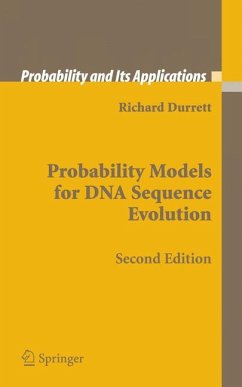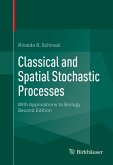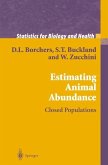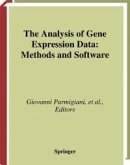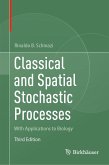This is the second edition and is twice the size of the first one. The material on recombination and the stepping stone model have been greatly expanded, there are many results form the last five years, and two new chapters on diffusion processes develop that viewpoint. This book is written for mathematicians and for biologists alike. No previous knowledge of concepts from biology is assumed, and only a basic knowledge of probability, including some familiarity with Markov chains and Poisson processes. The book has been restructured into a large number of subsections and written in a theorem-proof style, to more clearly highlight the main results and allow readers to find the results they need and to skip the proofs if they desire.
Rick Durrett received his Ph.D. in operations research from Stanford University in 1976. He taught in the UCLA mathematics department before coming to Cornell in 1985. He is the author of eight books and 160 research papers, most of which concern the use of probability models in genetics and ecology. He is the academic father of 39 Ph.D. students and was recently elected to the National Academy of Sciences.
Dieser Download kann aus rechtlichen Gründen nur mit Rechnungsadresse in A, B, BG, CY, CZ, D, DK, EW, E, FIN, F, GR, HR, H, IRL, I, LT, L, LR, M, NL, PL, P, R, S, SLO, SK ausgeliefert werden.
Hinweis: Dieser Artikel kann nur an eine deutsche Lieferadresse ausgeliefert werden.
"This book serves as an introduction to, and a compilation of, results in the new and growing field of probability theory for DNA evolution. The author is a probabilist, but he has made an effort to appeal to biologists and mathematicians alike. Biologists will find in this book those methods used for studying DNA variability that go beyond straightforward applications of statistics and require genuine mathematical insight into the underlying mechanisms. The example data are real and the driving motivation is to understand these truthfully. Mathematicians will find in this book not an attempt to develop some abstract theory, but rather a kaleidoscopic collection of ideas and methods invented to attack a common problem. The emphasis is on catching the main ideas in down-to-earth calculations; continuum models and more sophisticated methods from analysis are avoided. The book starts with the Wright-Fisher model for neutral selection in a constant population, and then builds and varies on this in Chapters 1--3 by adding the effects of mutation, recombination, selection, nonconstant population sizes and spatial structure. Chapter 4 is devoted to statistical tests for detecting departures from the neutral model and Chapter 5 discusses the large-scale structure of the DNA such as the size and number of chromosomes, inversions, translocations and duplications. This book will serve as a useful guide to this new and exciting field and an inspiration even for the more experienced readers."
-- Mathematical Reviews
"With numerous interspersed example datasets from the primary literature, this book offers a brief introduction to models of both long-term and short-term DNA sequence evolution, with emphasis on the latter...Diverse audiences will find much of the value in this concise book. The author's rigor and ability to embed material in a broader mathematical context will appeal to quantitative readers with little background in biology...The book's strength is in its mathematical content, which revives almost-forgotten theorems, includes new proofs, and is thorough but not overwhelmingly detailed or overburdened with notation."
-- Journal of the American Statistical Association, June 2004

